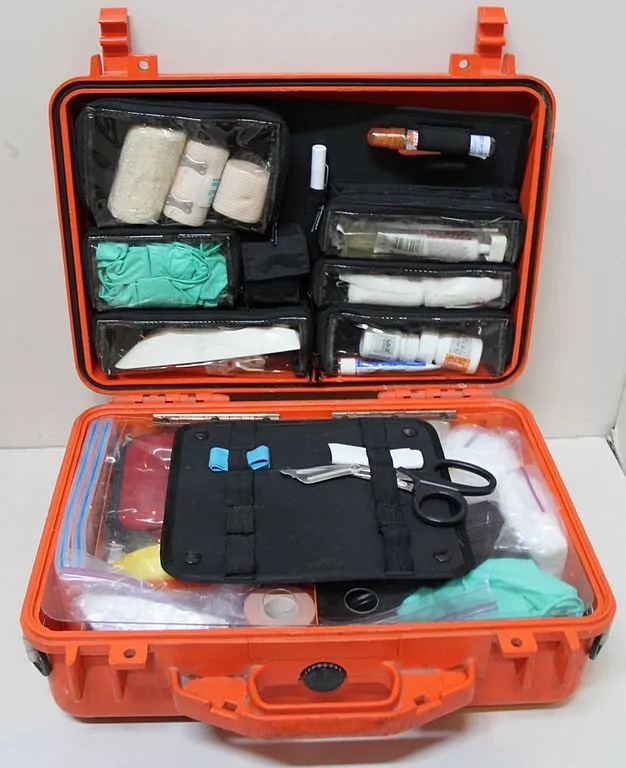Take charge of your Annapurna Circuit adventure! Gear up for an unforgettable journey by following our comprehensive Annapurna Circuit Trek Packing List. Don’t miss out on the essential equipment and clothing you need to conquer the trek. Get ready to embark on a remarkable experience amidst breathtaking landscapes. Start packing now and pave your way to an incredible Annapurna Circuit trek!
Ensuring you have the necessary gear and attire for an Annapurna Circuit trek is of utmost importance. We are here to assist you by providing a comprehensive list of every item, regardless of size, that should be included in your luggage. We will also provide detailed explanations for each item.
Don’t rush your preparations for the Annapurna Circuit trek! Packing for this adventure requires careful consideration to guarantee you have all the essential equipment. Take your time and make sure you’re fully equipped before setting off on this incredible journey. Your safety and enjoyment depend on it. Start gathering your gear today and embark on an Annapurna Circuit trek that’s well-prepared and truly unforgettable!
Travel insurance for your Annapurna Circuit trek
When planning your Annapurna Circuit trek, one crucial aspect you should never overlook is travel insurance. Regardless of your fitness level or trekking experience, hiking at high altitudes carries inherent risks, making it essential to have insurance coverage for unforeseen emergencies.
Just like in the Everest Region, Acute Mountain Sickness (AMS) is a genuine concern for trekkers at high altitudes in the Annapurna Circuit as well. Additionally, there is always a possibility of other injuries while trekking. In case of an emergency, helicopter evacuation is often the only means of getting off the mountain. It’s not uncommon to witness a constant stream of helicopters shuttling between villages.

Taking travel insurance for your Annapurna Circuit trek seriously is vital. It can be a matter of life and death, as lacking sufficient funds to cover emergencies put your life at risk.
When selecting travel insurance, it is imperative to ensure that your policy specifically covers high-altitude trekking in the Annapurna Circuit. I recommend considering World Nomads as they offer coverage for high-altitude trekking up to 6,000m, which exceeds the elevation of the Annapurna Circuit’s highest point, Thorong La Pass (5,416m). However, always review the policy details to confirm that it meets all your requirements.
Don’t underestimate the importance of travel insurance for your Annapurna Circuit trek. Prioritize your safety and peace of mind by securing comprehensive coverage before embarking on this awe-inspiring adventure.
Expedition Duffel Bag or Hiking Backpack for Annapurna Circuit Trek
Deciding between an expedition duffel bag and a hiking backpack for your Annapurna Circuit trek can be a challenging task, but it largely depends on your specific requirements and preferences.
An expedition duffel bag is typically larger in size and designed to accommodate more gear, making it an ideal choice if you are carrying a substantial amount of equipment or plan to engage in mountaineering activities in addition to trekking. These bags often come with multiple compartments and features that help with organizing your gear, and some may even have detachable daypacks for shorter excursions.

On the other hand, a hiking backpack is generally smaller and lighter, making it a more suitable option if you prefer to travel with minimal weight and move swiftly on the trail. These backpacks tend to have fewer compartments and features, prioritizing a streamlined design for enhanced mobility.
If your plan is solely to trek the Annapurna Circuit without engaging in additional mountaineering, a hiking backpack should suffice. Look for a backpack that offers a comfortable fit, ergonomic design, and features such as a hydration system and a rain cover. A backpack with a capacity of around 40-50 liters should provide ample space to carry all the necessary gear for the trek.
However, if you intend to participate in mountaineering activities or need to carry a significant amount of equipment, an expedition duffel bag may be a more suitable choice. Look for a duffel bag with a capacity of around 70-100 liters, equipped with features like compression straps and durable construction.
Ultimately, the decision between an expedition duffel bag and a hiking backpack for your Annapurna Circuit trek comes down to personal preference and the nature of your trekking plans. Regardless of your choice, it is crucial to try out the bag beforehand to ensure a proper fit and comfortable carrying experience during extended periods on the trail.
Annapurna Circuit Trek Packing List:
Headgear
Your head and face are the most exposed parts of your body during the trek, so it’s important to protect them from the sun, wind, and cold. Here are some headgear items that you should include in your packing list for the Annapurna Circuit Trek:
- Sun hat
- Beanie or woolen hat
- Sunglasses
- Buff or neck gaiter
Upper Body
Layering is key when it comes to packing for the Annapurna Circuit trek. It allows you to regulate your body temperature as the weather changes. Here are some upper-body items that you should include in your packing list:
- Base layer (long-sleeve shirt)
- Insulated mid-layer (fleece or down jacket)
- The waterproof outer layer (shell jacket)
Lower Body
Your lower body is equally important when it comes to layering. Here are some lower-body items that you should include in your packing list:
- Base layer (long underwear)
- Hiking pants
- Waterproof pants
Underwear
It’s important to pack moisture-wicking underwear to keep you dry and comfortable during the trek. Here are some underwear items that you should include in your packing list:
- Moisture-wicking underwear
- Sports bras (for women)
Accessories
Accessories can make a big difference in your comfort level during the trek. Here are some accessory items that you should include in your packing list:
- Trekking poles
- Headlamp or flashlight
- Water bottles or hydration system
- Sleeping bag liner (optional)
- Camera or smartphone for capturing memories
Please note that the above packing list has been modified for the Annapurna Circuit Trek (ACT) and ABC (Annapurna Base Camp) specifically. Adjustments may be required based on your individual needs and the specific requirements of your trek.
You can learn more about what to look for in a good sleeping bag by reading The best sleeping bags for trekking in Nepal.
Toiletries
Keeping clean and hygienic is important during the trek. Here are some toiletry items that you should include in your packing list for the Annapurna Circuit Trek:
- Toothbrush and toothpaste
- Wet wipes or hand sanitizer
- Sunscreen and lip balm
- Moisturizer
- Basic first aid kit (see below)
Electronics
While you may want to disconnect during the trek, some electronics are necessary for safety and convenience. Here are some electronic items that you should include in your packing list for the Annapurna Circuit Trek:
- Mobile phone and charger
- Power bank
- Portable speaker (optional)
- A GPS machine or map and compass
Annapurna Circuit Trek Packing List: First Aid Kit

It’s important to be prepared for any medical emergencies during the trek. Here are some basic first-aid items that you should include in your packing list for the Annapurna Circuit Trek:
- Bandages and blister pads
- Pain relievers
- Anti-inflammatory medication
- Antihistamines
- Diarrhea medication
- Anti-nausea medication
- Prescription medication (if needed)
Annapurna Circuit Trek Packing List: Documents
Don’t forget to bring important documents and paperwork with you on the trek. Here are some documents that you should include in your packing list for the Annapurna Circuit Trek:
- Passport
- Visa (if required)
- Travel insurance documents
- Itinerary and permits
- Emergency contact information
What Not to Pack for Annapurna Circuit Trek
It’s just as important to know what not to pack for an Annapurna Circuit trek. Here are some items that you should leave behind:
- Cotton clothing (it retains moisture and takes a long time to dry)
- Heavy, bulky items (you’ll be carrying your own gear, so pack light)
- Non-essential items (if you can live without them, leave them at home)
My Annapurna Circuit Trek Packing List Budget
The cost of the gear and equipment for an Annapurna Circuit trek can add up quickly. Here are some tips for creating a budget-friendly packing list:
- Rent gear instead of buying it
- Shop for gear during the off-season for discounts
- Look for deals and sales online
- Borrow gear from friends or family members
Daypack for Your Annapurna Circuit Trek
A daypack is an essential item for your Annapurna Circuit trek as it will be your go-to bag for carrying essential items that you will need throughout the day, such as water, snacks, a camera, extra layers, and other personal items.
When choosing a daypack for your Annapurna Circuit trek, consider the following factors:
- Capacity: A daypack with a capacity of around 20-30 liters should be sufficient to carry your essentials for the day.
- Comfort: Look for a daypack that has padded shoulder straps and a back panel for added comfort. A hip belt can also help distribute the weight and reduce strain on your shoulders.
- Durability: Your daypack will be exposed to the elements and rugged terrain, so choose a pack made of durable materials that can withstand the demands of trekking.
- Features: Consider features such as hydration compatibility, multiple compartments and pockets for organization, and compression straps for securing your gear.
Some popular daypack options for the Annapurna Circuit trek include the Osprey Talon 22, Deuter Speed Lite 24, and the Gregory Zulu 30. Ultimately, the best daypack for you will depend on your personal preferences and needs, so it’s recommended to try on a few options before making a decision.
Best Time to Trek Annapurna Circuit with Fewer Backpacks
The best time to trek the Annapurna Circuit with fewer backpacks is during the months of October and November. During this period, the weather is generally clear, stable, and dry, with mild temperatures during the day and cool temperatures at night.
Trekking during October and November offers excellent visibility, allowing you to enjoy breathtaking views of the surrounding mountains and landscapes. The trails are less crowded compared to the peak season in spring, providing a more serene and peaceful trekking experience.
It’s important to note that the weather in mountainous regions can be unpredictable, and conditions can vary. It’s advisable to check the weather forecast and be prepared for changes in weather by carrying appropriate gear, such as rain gear and warm clothing.
Regardless of the season, it’s recommended to book your trek and accommodations in advance to secure your spot and ensure a smoother experience on the Annapurna Circuit trek.
Closing Remarks on Your Annapurna Circuit Packing List
Preparing for the Annapurna Circuit trek may seem overwhelming, but fear not! By ensuring you have the appropriate gear and equipment, your journey will be both secure and delightful. Remember the cardinal rules: pack efficiently, layer your clothing, and prioritize essentials like a first aid kit and vital documents. Above all, embrace the adventure and relish the extraordinary experiences that lie ahead.
Related:
Discover more from Nepal Travel Vibes
Subscribe to get the latest posts sent to your email.



